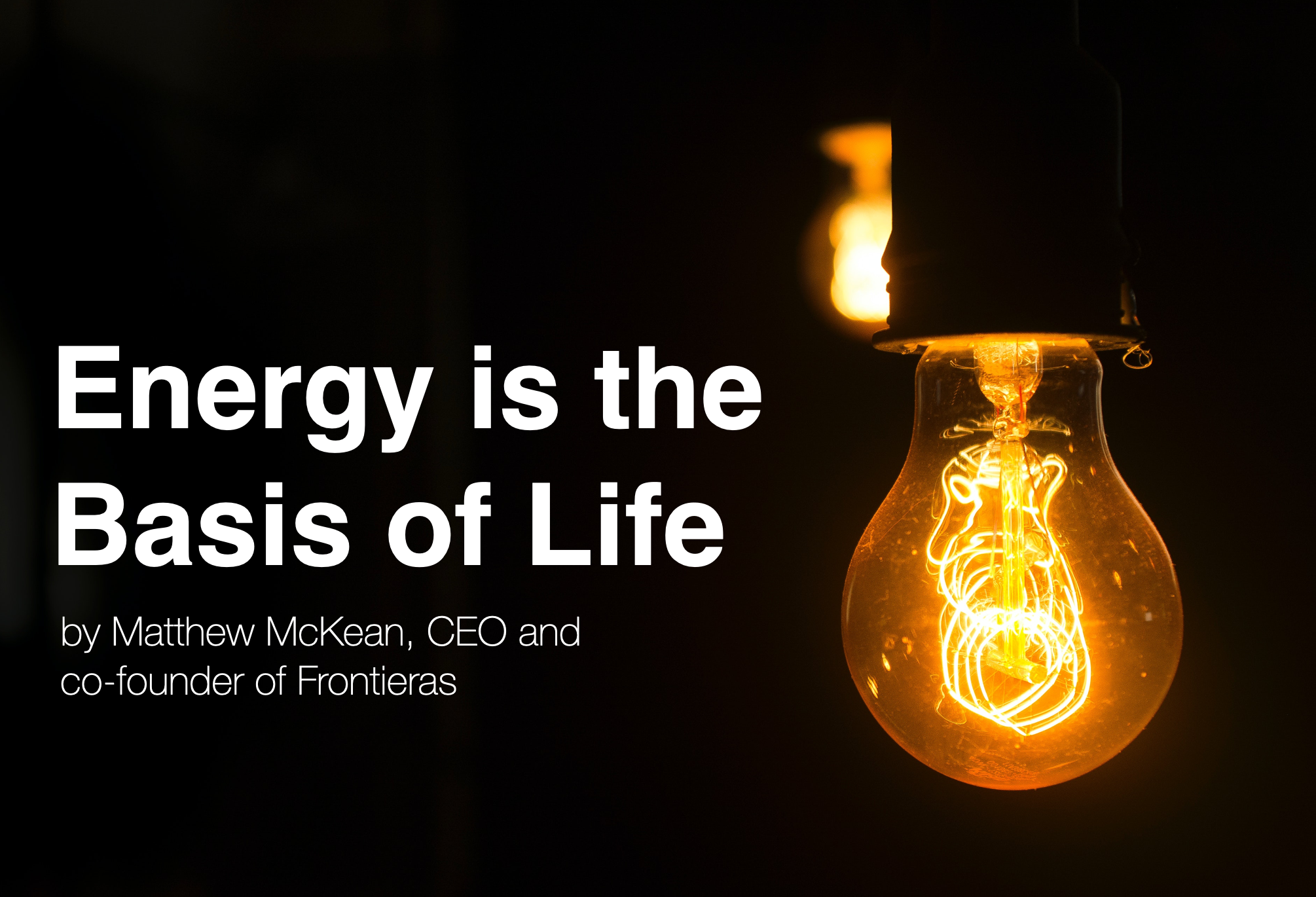Energy is the Basis of Life
Written by Matthew McKean, CEO and Co-Founder of Frontieras
When we think about life, one can think about the actual creation of life made possible by the shared relationships of atoms and molecules, or one can consider the life we create while we’re here on Earth. Similar to the delicate relationship that molecules and atoms share (which my business partner and Frontieras' CTO Joe Witherspoon loves to talk about), so too is the vulnerability exposed of our “way of life” when you begin to take away basic essentials like energy.
The recent fires in Southern California that consumed more than 20 homes and forced the evacuation of more than 900 residents provide a sign of what is to come. Recently, I spoke with a colleague who had a bird‘s-eye view of just how quickly those fires escalated… from a single plume of smoke to the devastation that quickly followed. The fires encapsulate for Californians the challenges summer presents as the state is facing another drought, rolling blackouts, a failing power grid, and a horrible climate policy that’s left the state vulnerable to severe energy shortages. These challenges are in the face of the nation’s rising inflation, energy costs, and continual supply chain issues.
California is having trouble keeping the lights on as it rapidly scales the use of intermittent solar and wind power. According to a recent article in Reuters, California officials forecast a potential shortfall of 1,700 megawatts this year, a number that could go as high as 5,000 MW if the grid is taxed by multiple challenges that reduce available power while sending demand soaring. Specific highlights that were revealed during the online briefing include:
Supply gaps could leave between 1 million and 4 million people without power.
Outages will only happen under extreme conditions and will depend in part on the success of conservation measures.
In 2025, the state will still have a capacity shortfall of about 1,800 MW. This according to officials from the California Energy Commission, Public Utilities Commission, California Independent System Operator and Newsom's office.
California also projected annual electricity rate increases of between 4% and 9% between now and 2025.
Karen Douglas, an adviser to California Governor Gavin Newsom, said during the briefing, "We are in a place now where we have to factor in a new landscape in terms of the challenge in front of us with bringing the projects that we need online."
Douglas is referring of course to the green projects and initiatives adopted by California. These policies overreached in an attempt to accelerate California’s green agenda and are now proving to be incapable of supporting the energy needs of the state. This is incapsulated in two actions occurring late last year, including California’s request for an emergency order from the U.S. federal government to maintain system reliability by, among other actions, loosening pollution restrictions and allowing the state to require certain fossil fuel plants scheduled to retire to stay online. California also proposed the building of several temporary natural gas plants to avoid blackouts, even as the state shuts down the Diablo Canyon nuclear power plant, which produces more zero-carbon electricity than all the state’s wind turbines combined. California is not alone; however, it is one of the most aggressive states to jump on the green bandwagon without considering the consequences and outlying factors. For instance, California’s ongoing drought has decimated its supply of hydropower from key water sources.
Make no mistake about it -- the relationship between energy and our way of life is intertwined. The consequences of our actions have led us to this place, and unless we embrace all types of new technologies, we are going to struggle for the foreseeable future. The nation’s power grid is under stress, gas and diesel prices continue to rise, renewable energy is not reliable (i.e. wind, solar and hydro) and the world is recognizing the impact that bad policies have on allowing us to grow as a society, feed a growing population and innovate across a wide spectrum of industries. The departure from hydrocarbons as an energy source has the potential to decimate our economy, prohibit our ability to deliver reliable energy and could leave millions vulnerable.
Frontieras North America, a subsidiary of Frontier Applied Sciences, has spent the last 10 years developing a technology that reimagines the processing of hydrocarbons within a broader energy market. Specifically focused on efficiently processing fossil fuels, Frontieras maximizes the energy output and produced yields of each form including solids, liquids and gas. Frontieras and its Solid Carbon Fractionation technology are poised to redefine the energy market and provide a way for hydrocarbons to be used as a core component of our society’s energy creation. To learn more, visit us at www.Frontieras.com.

